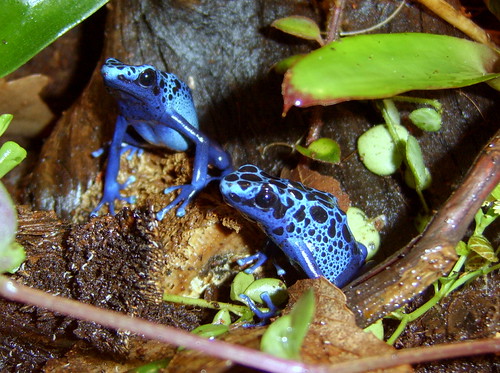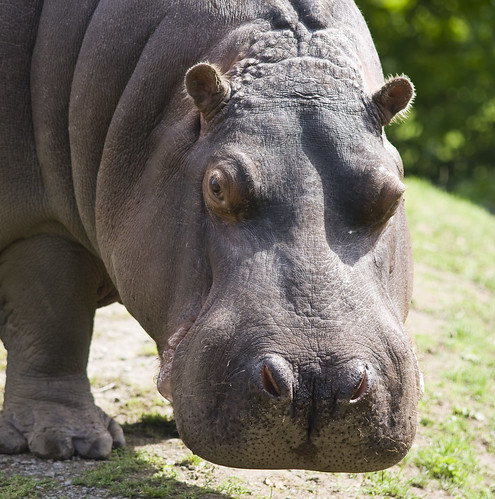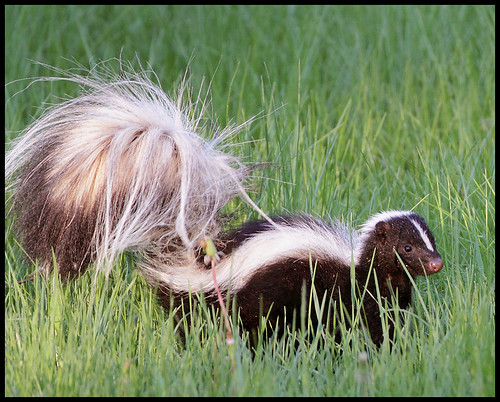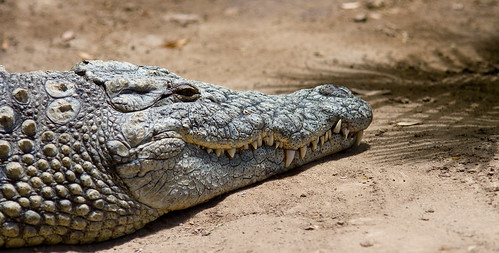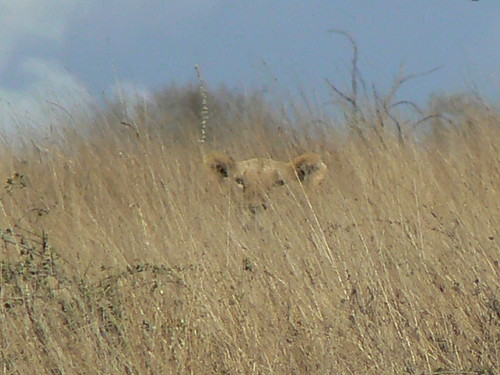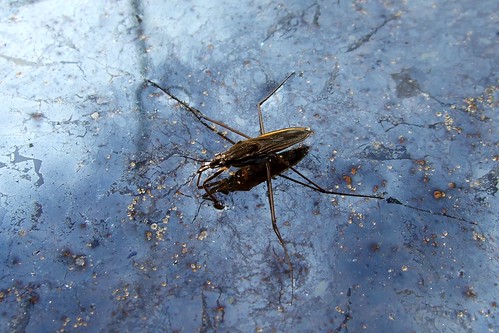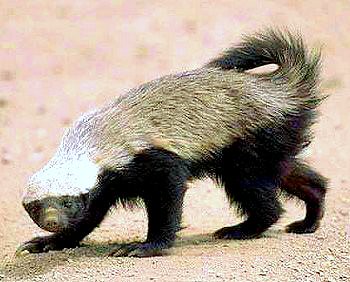We humans, though often undoubtedly harmful to them, have an incredible fascination with animals. In deed, many people who seem scornful, even of their own kind, are more compassionate when it comes to other species. Even Hitler was fond of his pet dog, Blondi.
However, even the most ardent animal lovers have to draw the line somewhere. These are ten animals you certainly wouldn’t want to have in your house.
Stonefish
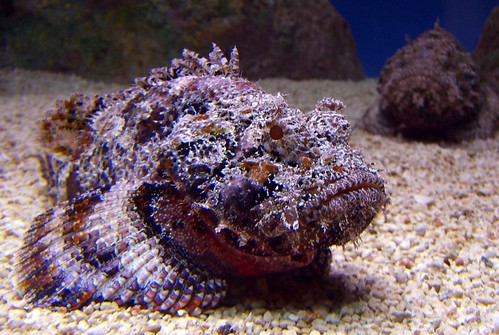
The Stonefish is the most poisonous fish in the world. Armed with thirteen spines down its back and perfectly camouflaged to look like a rock, the Stonefish can normally be found hanging about in shallow pools and coral reefs, feeding on small fish and shrimps.
Stepping on a Stonefish is widely to be considered one of the most painful experiences possible, and it has been reported more than once that the pain of a sting has been so great, the victims have pleaded to have the unlucky limb amputated.
Normally, victims of the sting survive but, if not treated the poison can kill within two hours, as well as causing temporary paralysis, shock and nausea. Spare a thought for the Stonefish though. They are now an endangered species due to threats to their natural habitat.
Poison Dart Frog
Given there beautiful, vivid colourings it is hard, when seeing a Poison Dart Frog to resist the temptation to reach out and pick it up. The animals name will give you some clue as to why this is a pretty bad idea.
The most poisonous of this species, the Golden Poison Frog, has enough poison in its skin to kill 10,000 mice, just by touching them. Likewise, it could kill the average human 20 times over.
Amazingly, scientists believe that, the frogs do not synthesise the toxins in their skin themselves, but create it from chemicals they ingest from their pray, meaning that when kept in captivity and fed an altered diet, they are no longer poisonous. Maybe they’re perfect pets after all…
Hippopotamus
Whilst lions are, quite rightfully, thought of as being very scary, they are nowhere near as dangerous as hippos. These large mammals, which spend most of their time wallowing in muddy waters, quite literally chilling out, actually kill significantly more people each year than Africa’s other big guns.
On top of this, hippos are know to be highly aggressive, frequently attacking humans with little or no provocation. As well as having enormous tusks, hippos are terrifyingly agile. Despite their cumbersome appearance, they are able to charge at speeds of 30mph on land, faster than humans can manage. Oh, and they move quicker in water as well, so there’s no escaping if you annoy one of them.
Redback Spider
Redback spiders, easily recognisable for their bulbous black bodies adorned with a menacing red stripe, have a neurotoxic venom and, due to frequently building their webs near humans, aren’t shy about using it. In Australia about 2,000 bites are recorded every year.
However, if you think what they do to people is bad, wait till you hear about how redbacks treat each other. Whilst mating, the female will eat, her partner, beginning her meal mid-coitus. Even creepier, the male assists her in doing so, presenting his abdomen in front of her fangs in preparation. Apparently evolution has decreed this the most successful why of ensuring the males genes get passed on. Nice one, Darwin…
Striped Pole Cat
The striped pole cat is, according to the Guinness Book of World Records (is there any more reliable source?) one of the most foul smelling creatures on the face of the earth.
The animal is solitary and will only tolerate contact with others of its own kind when it’s time to reproduce, and to be fair you can see, or rather smell why, it doesn’t want to hang about with other members of the species.
The spray it secretes from its anal gland is apparently so unbearable that in one instance nine lions were kept at bay by the smell of a pole cat, watching on from a safe distance down wind whilst it scavenged their freshly killed pray…
Nile Crocodile
Nile Crocodiles are scary, scary creatures. They’ve been around since prehistoric times, and whatever it was that did the dinosaurs in, it wasn’t enough to see off the mighty croc. In the millions upon millions of years they’ve existed these creatures have learnt a thing or two about killing stuff.
In deed, one of the single most notorious man eating animals alive today is a gigantic Nile crocodile called Gustave. It is claimed that he is over 60 years old and that he has killed over 300 humans in and around Burundi.
Scientists think that his enormity might make it hard for him to hunt his usual prey, hence his decision to go after humans. Not a healthy way to resolve insecurities about your size…
Japanese Giant Hornet
Japanese giant hornets are, as insects go, frighteningly large. However, we need to be thankful that they are only as big as they are. If they were our size, we’d definitely be at their mercy.
These psychotic killers will attack the hives of European bees, using a force of just 30 hornets to massacre up to 30,000 bees, who they decapitate with their jaws.
Japanese bees have developed an interest defence against hornet attacks, which involves mobbing the hornets, creating a big ball around them and using their body heat and the friction of their scurrying to generate high enough temperatures to cook the hornet alive. No matter how much you like honey, you do not want either of these creatures in your home.
Tsavo Lions
Lions are often thought of as being a bit overrated in the dangerous animal stakes, but not those from Tsavo. These main-less lions have been know to attack humans using brutal force, the most famous example being the duo dubbed the Tsavo man-eaters.
In 1898 the pair of lions known as Shadow and The Darkness frequently attacked construction workers at the site of the Kenya-Uganda Railway, then being built. It is claimed that they killed and ate as many as 135 workers before being shot dead.
Theories as to why they decided humans were to be their meal of choice is wide ranging. Some believe they were reincarnated African kings attempting to stop the British project of imperialism, others blame it on broken teeth that would have made it hard for them to hunt their natural prey. Either way, they were bad kitties.
Water Boat Man
Noisy pets can be annoying. However, whilst occasionally having your sleep disturbed by a barking dog or a restless kitten is one thing, living with a water boat man would be quite another…
Relative to their size, these creatures are the loudest on earth. At only 2mm in length, the aquatic insects are capable of generating 99.2 decibels of sound, the equivalent of large orchestra playing loudly, right up in your face.
How do these creatures create such a racket? By a process called ‘stridulation’, which involves the animal whacking its penis, which is only the breadth of a hair, against its abdomen at high speed. This supposedly helps attract females, but personally I wouldn’t rush to try it.
Honey Badger
The honey badger may not be the biggest of predators, it may not have a deadly toxin, or a track record of eating people, but it is still a very scary prospect.
Why? Honey badgers seem to have basic lack of any sort of fear instinct. They will attack anything that irks them or gets in there way. Cheetas, buffaloes, deadly snakes, hives of killer bees, the honey badger will back itself against any of them.
Its skin is hard enough to withstand stings, scratches and even machete blows. More over the skin is loose enough that, even when gripped in the jaws of another animal, the honey badger is able to turn and strike it with its powerful claws. One to avoid…
About the author: Percy Porter has been fascinated by animals since he was a young child and having worked in a pet store for many years he has decided to put his experience down in writing on his pet care website Percy’s Pets.

